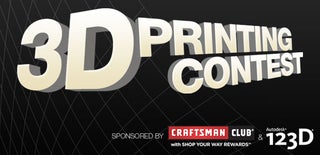Introduction: How to Tie a Turk's Head Coaster Using a 3D Printed Model
Tying a Turk's head knot can be tricky without something to follow along with, especially when you want to get more complicated than the standard 3 part x 5 bight ones you can find instructions for online. I generated a 3D model of a 6 part x 7 bight Turk's head and used it as a guide to actually tie the knot. I'm working on an app which will allow you to generate any Turk's head in any size, but for now all I have available is this single test model.
Step 1: Materials
1. The model
I had Shapeways print my model, which can be ordered here: http://www.shapeways.com/model/983341/nautical-themed-rope-coaster.html
I ordered the alumide material, but any of them will do.
2. A cardboard box
We'll be temporarily attaching the model to the box to hold it still while we tie the knot.
3. T-pins
The pins both hold the model in place as well as serve as something to keep the rope in place with once we start tying the knot.
4. Rope
I'll be using 1/8" cotton rope while I walk through it. It's a bit thick for this particular model, but it's great for knot tying in general! I ordered it from Knot and Rope Supply: http://knotandrope.com/store/pc/1-8-X-1-200-3-Strand-Cotton-6p1936.htm
Feel free to use whatever material you have, though you probably want to stay at or under 1/8" for this model. I think smaller material looks better as you can tie more passes. The red coaster shown above is tied with lacrosse crosslace and comes in many different colors: http://www.lax.com/lacrosse-equipment/Lax.com-Crosslace-Spool-Lacrosse-String-Supplies-4157.html
Step 2: Setup
Use the pins to attach the model to the box. The more pins you use the easier it will be to keep your rope lined up with the knot. If you use too many, though, they can also start getting in the way.
Step 3: Tie the Knot
You can start anywhere. Just follow the knot, making sure to go over and under strands as the model does. Starting at the half way point of your rope will save you some time pulling through slack. You can tie half the knot one way and then do the rest with the other half going the other way.
Step 4: Finish Up
Remove the pins and go around the knot a second time, just following what you've already tied. If you're using smaller material, you could even go around a third or fourth time. Once you've finished all the passes you want, you can finish the ends by sewing them together with thread, or gluing them with super glue. If you're using a nylon material such as lacrosse crosslace, you can melt the ends together.
Step 5: All Done!

Participated in the
3D Printing Contest

Participated in the
Epilog Challenge V













